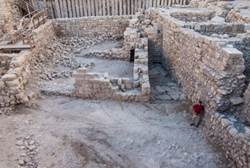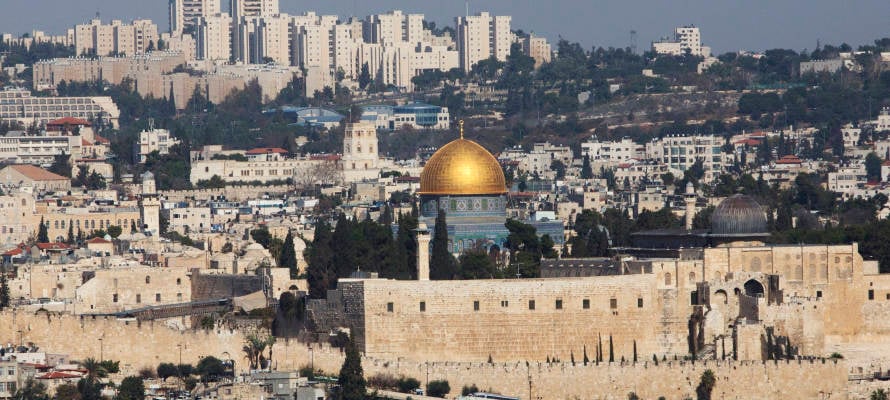The Old City of Jerusalem topped a CNN list of endangered historical structures, despite extensive conservation work by Israel. CNN cited the city’s inclusion on UNESCO’s List of World Heritage in Danger, clearly buying into anti-Israel politics.

Archaeologists uncovered the remains of a Hasmonean-era building in Jerusalem. (Assaf Peretz, IAA)
The Old City of Jerusalem topped a CNN list called “Last chance to see: 25 magnificent structures on the verge of extinction.” This is despite extensive work undertaken by both Israeli and Jordanian authorities to preserve the city, including the Dome of the Rock, whose image was used to symbolize the entire city.
The parameters that determined which sites made the list are unclear. For example, six out of the 25 sites are located within the UK. The list also includes Petra in Jordan and the old-style houses in Beirut, while completely ignoring the threat posed by ISIS to important historical sites in Syria and Iraq. ISIS terrorists are currently engaged in the eradication of the Syrian city of Palmyra, and last week they destroyed a 2,000-year-old lion statue. They have also threatened to tear down the archaeological remains of the ancient city of Nineveh, near modern-day Mosul, if Iraq attempts to retake the city, and have destroyed and plundered the “idolatrous” Assyrian section of the Mosul Museum.
CNN justified the inclusion of the Old City of Jerusalem with the following caption: “No other site has spent more time on UNESCO’s List of World Heritage in Danger – The Old City of Jerusalem has held a spot since 1982. A holy city for three different religions, it attracts millions of tourist with over 200 monuments, including the majestic Dome of the Rock. But political tension has hardened relations between Israel and UNESCO, preventing any preservation plans from moving forward.”

President Rivlin with Greek Orthodox Patriarch Theophilos III in the Old City on Easter. (Mark Neyman/GPO)
However, 2015 reports sent to UNESCO by Israel, Jordan and the Palestinian Authority jointly paint a very different picture. The Israeli report notes the challenges faced in preserving the Old City while still providing necessary public services for the hundreds of thousands of Jerusalem residents who call it home. Plans to improve the Old City, the report says, “implement policies and guidelines for safeguarding the cultural heritage of the Old City, the conservation and rehabilitation of historic assets, and facilitate the issuance of building permits in these blocks.”
The report lists a number of conservation projects underway at the Temple Mount, including the Dome of the Rock, the Church of the Holy Sepulchre and the walls of the Old City. The Palestinian-Jordanian report notes further conservation projects, especially at the Al-Aqsa Mosque. The condition of the Old City is a far cry from that of another site included much lower on the list, Pompeii, which has been described by Italy’s UNESCO commissioner as “destined to collapse completely.”
CNN also ignored the political context in which the Old City of Jerusalem was added to UNESCO’s List of World Heritage in Danger. Jordan proposed including the city on the list in 1982, 15 years after Israel reunited Jerusalem during the Six Day War. At the meeting in which the Old City was inscribed on the list, the United States objected, arguing that Jordan was attempting to reassert its dominion over Jerusalem. The Swiss delegate abstained based on a similar objection, while delegates of several other countries felt the need to specify that their vote to include the Old City should not be interpreted as support for any position of the final status of Jerusalem.
By: Sara Abramowicz, United with Israel
